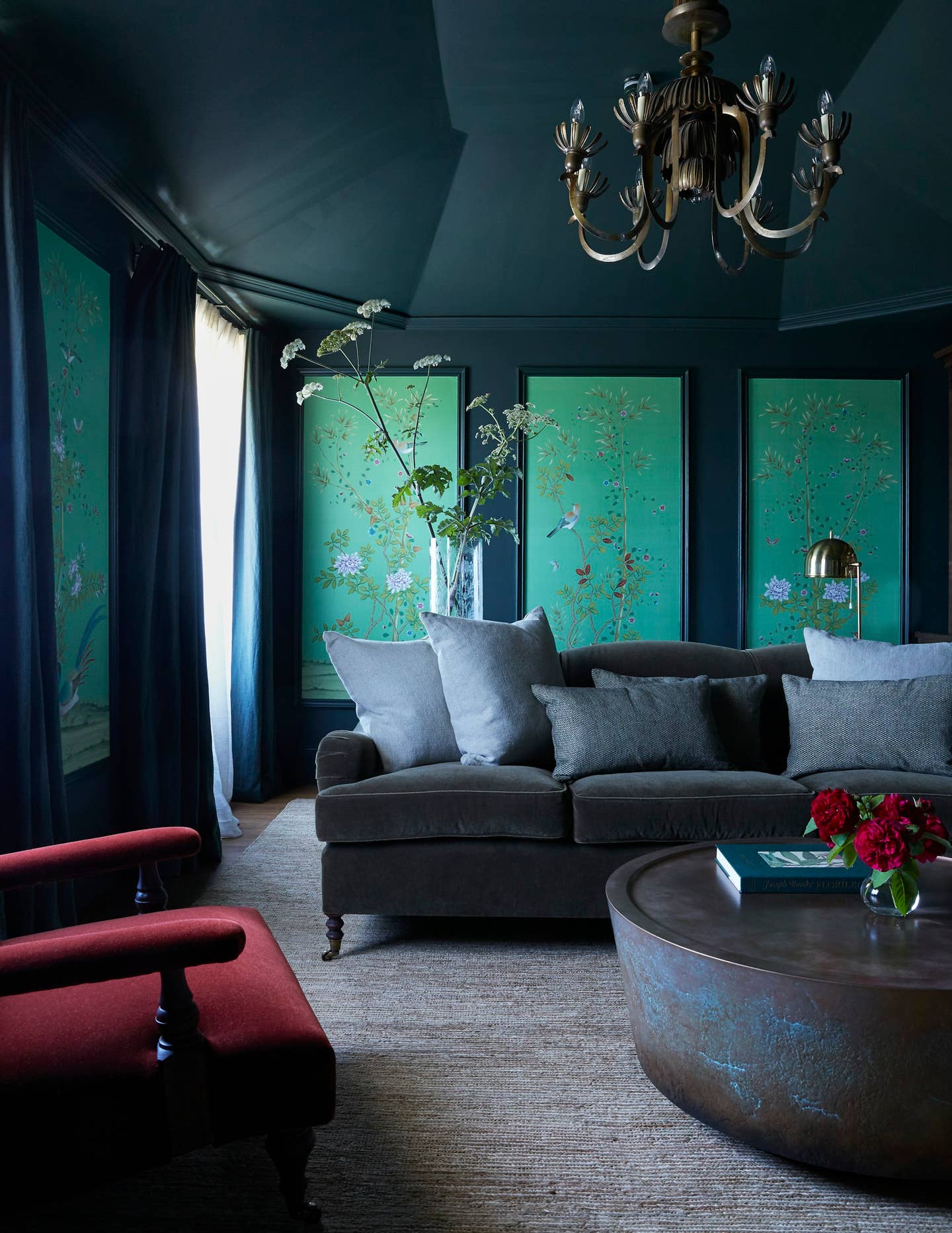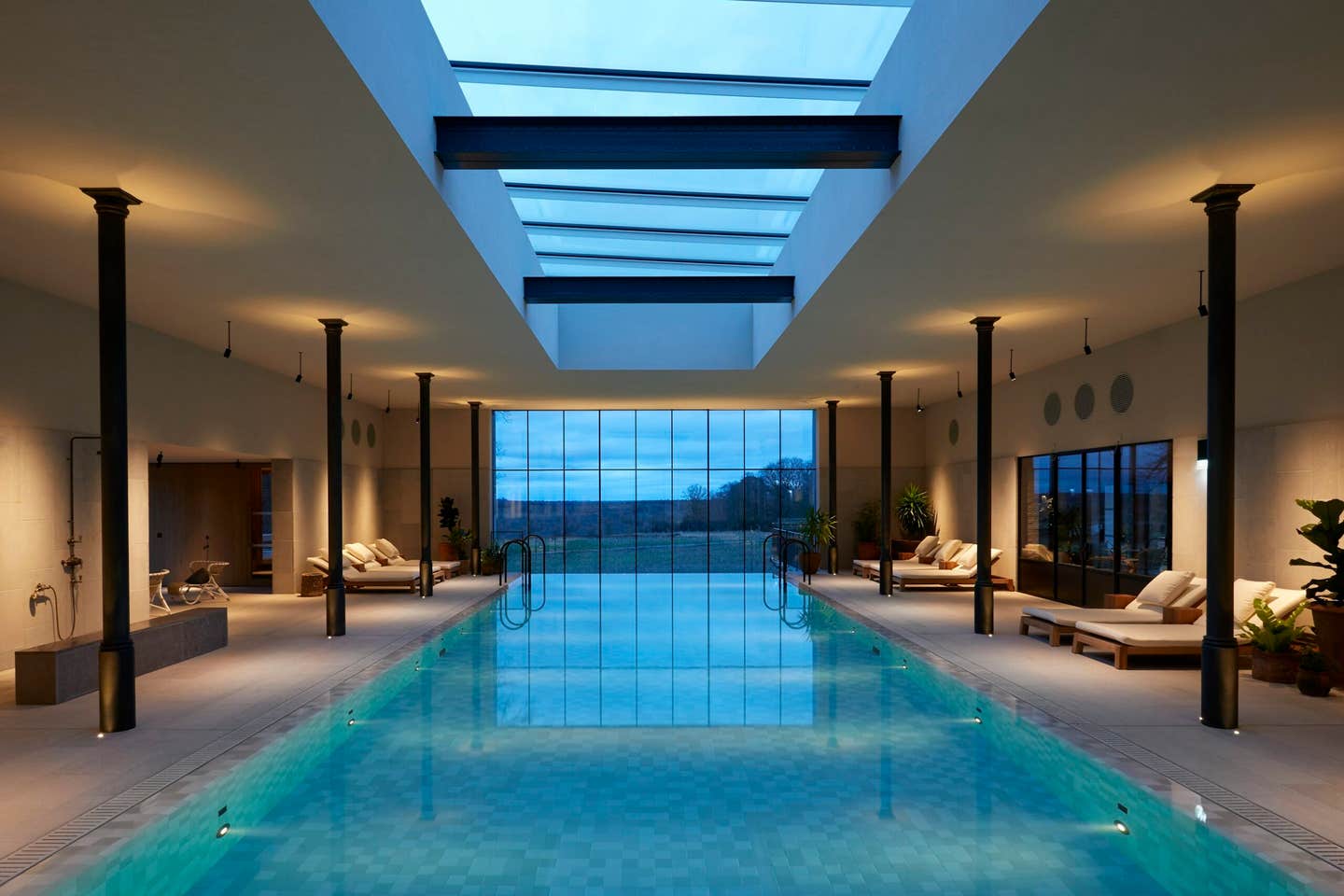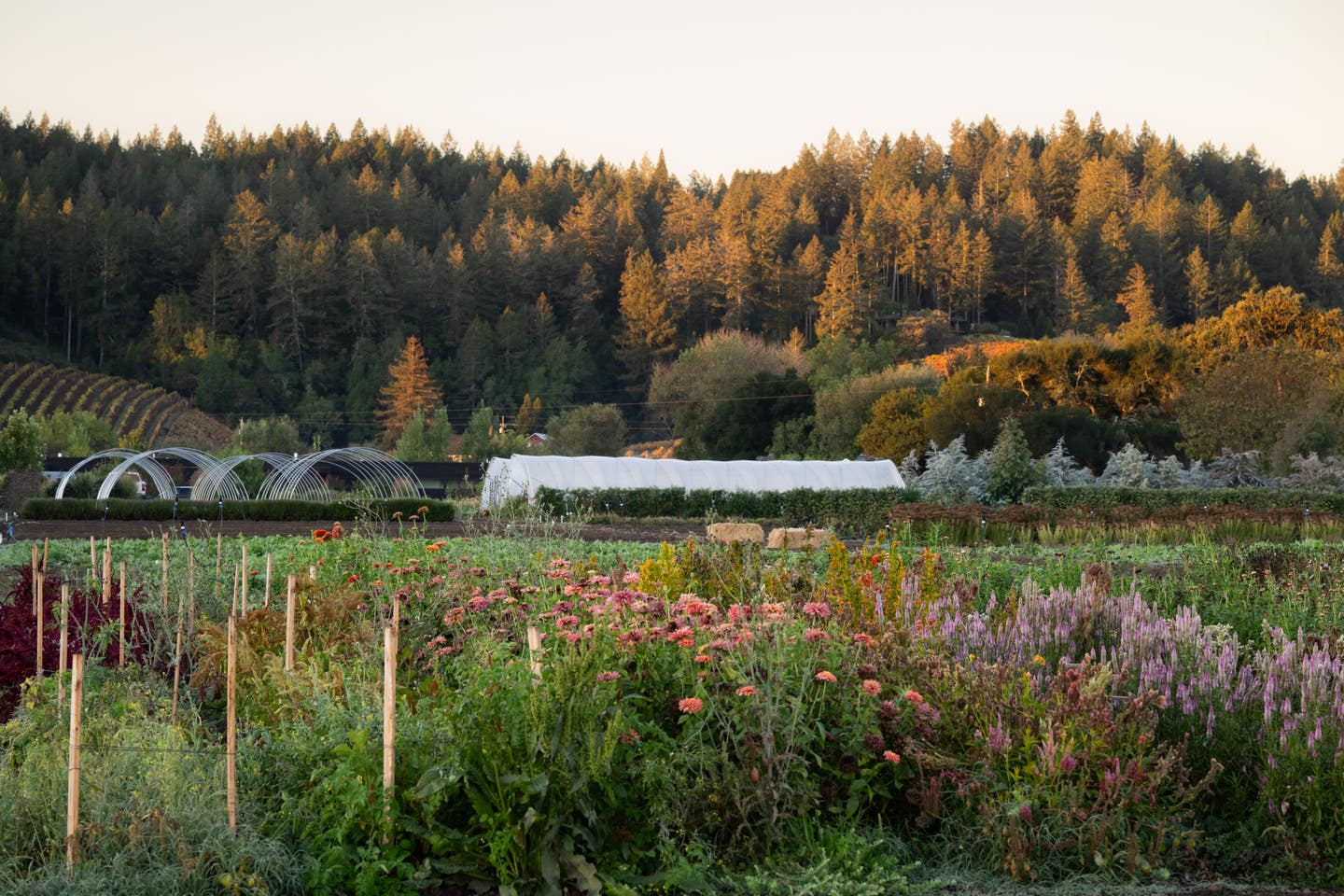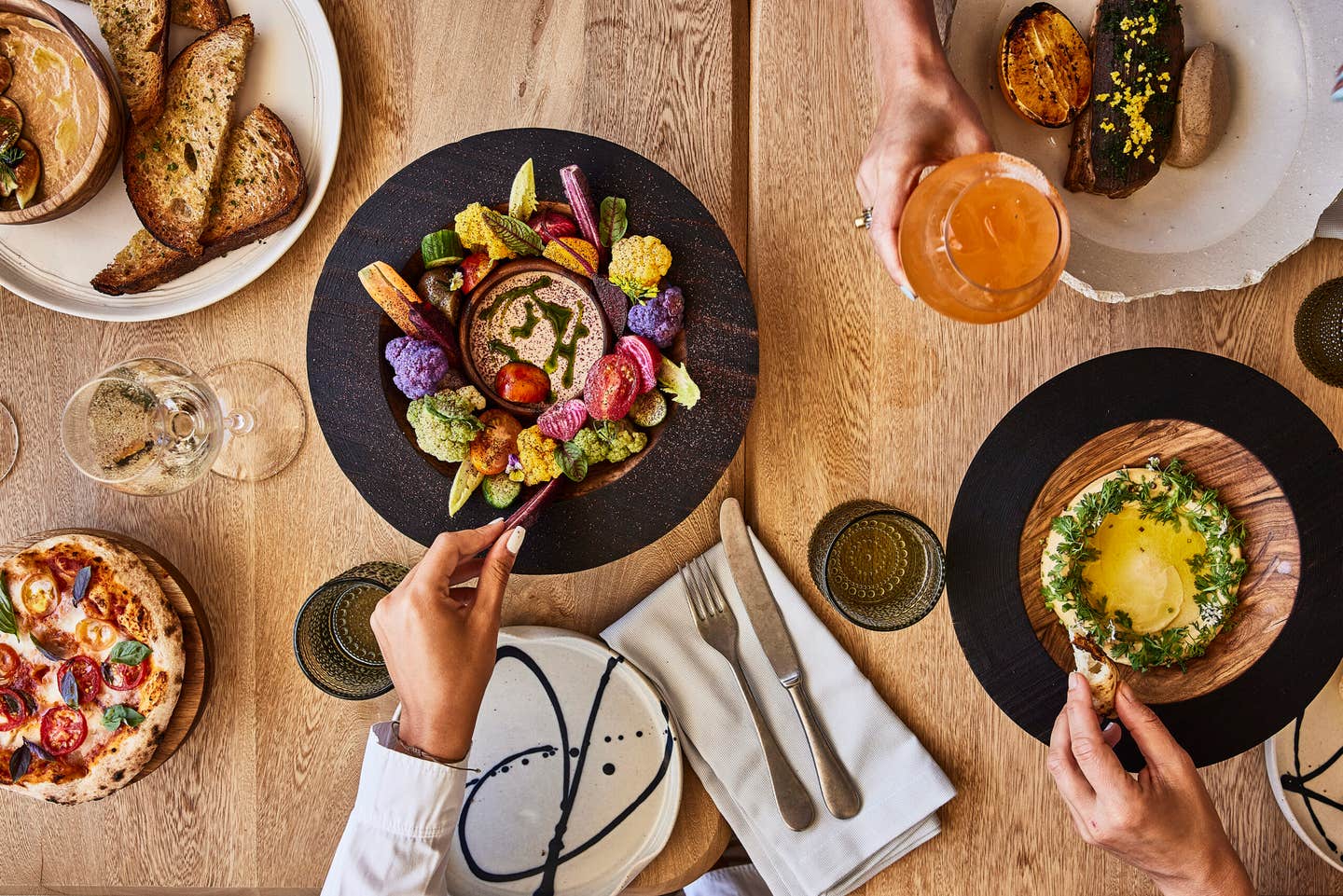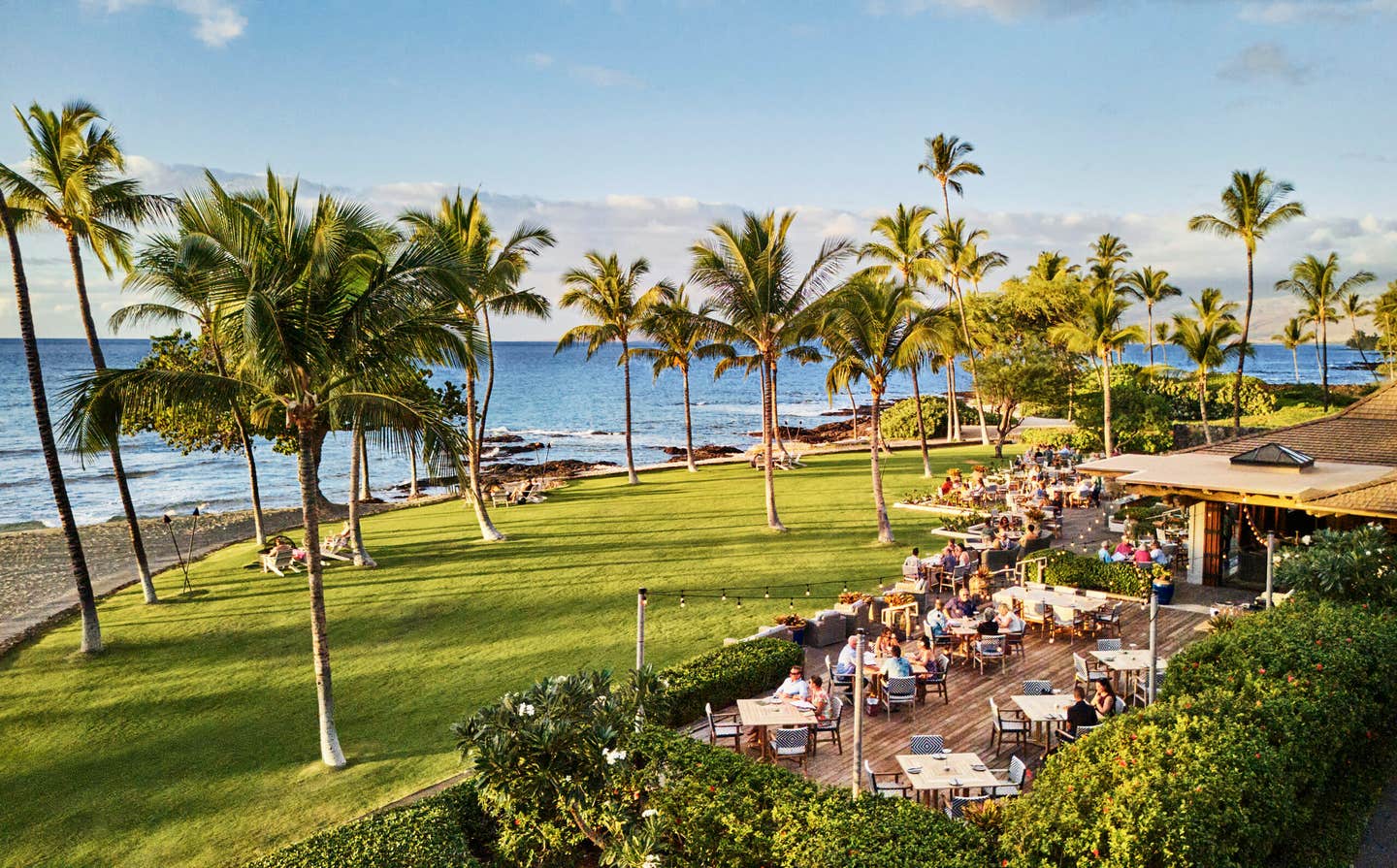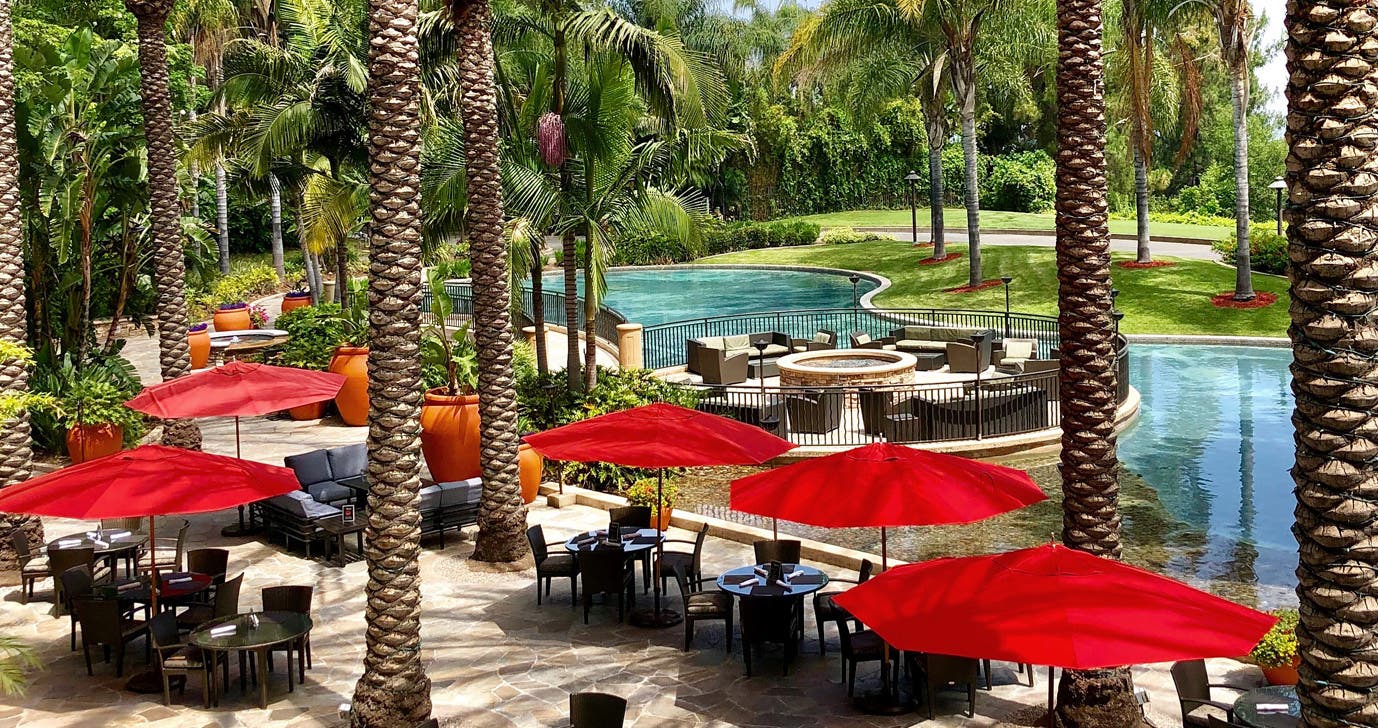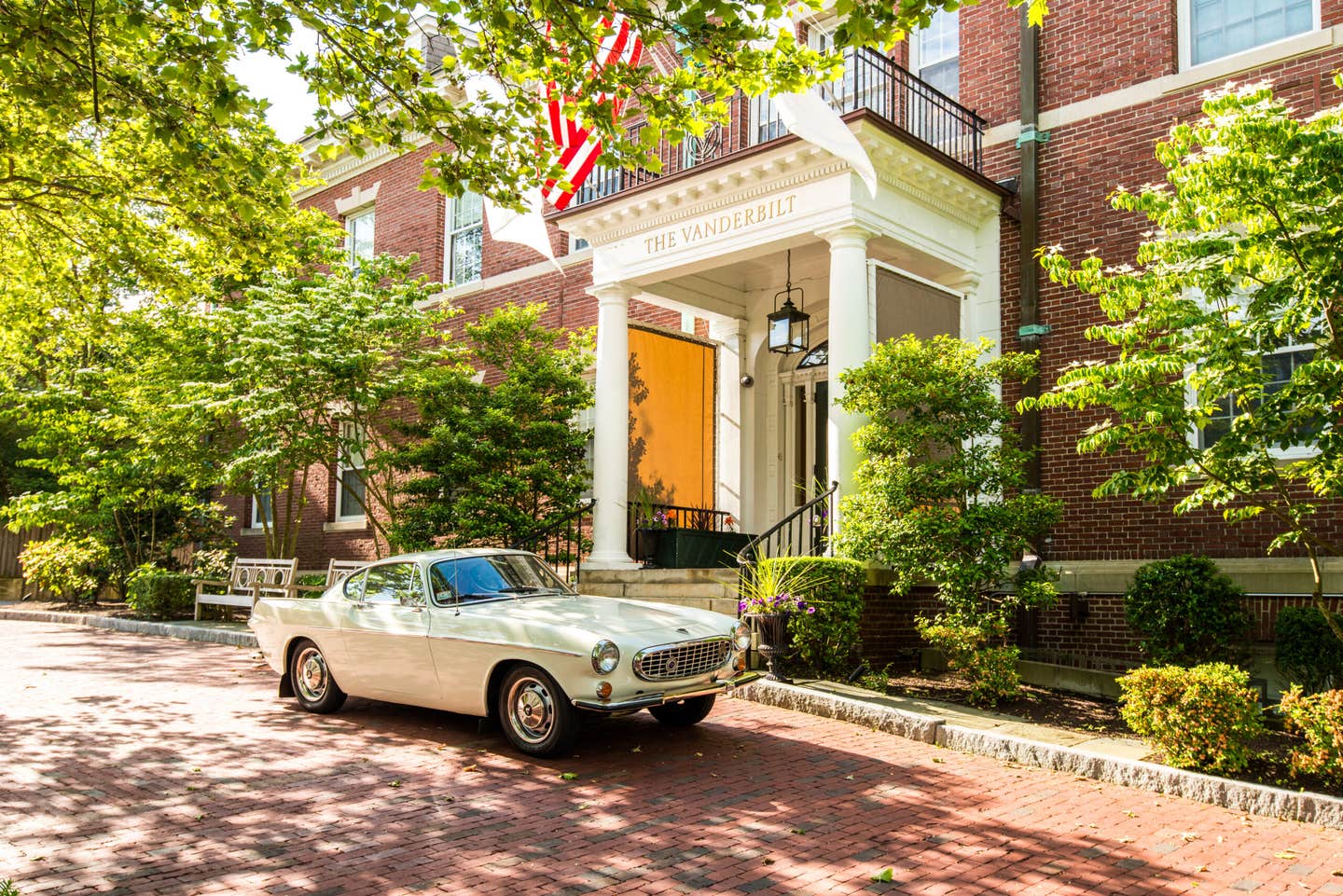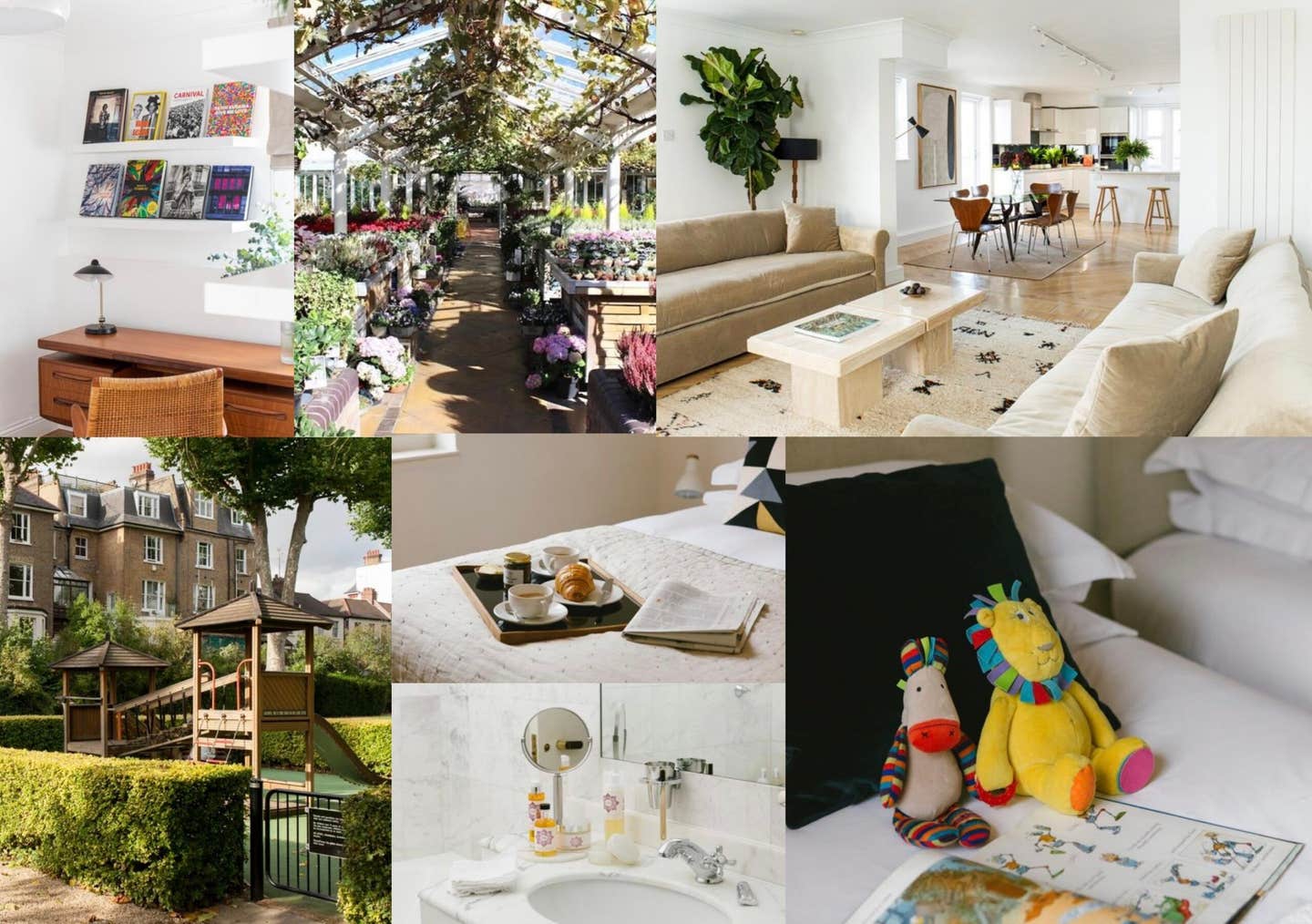by Lisa Alexander
The whole time I am at Heckfield Place in Hampshire, I half-expect Heathcliff to come galloping up—long for it, in fact. Heckfield Place is a proper English great house like Downton Abbey (filmed just down the hedgerow) or Austen’s manse (just down the lane). It’s also a spectacular Georgian manor with a twist, and that twist is Skye Gyngell, the fantastic London chef of Spring, and Dr. Gerald Chan, the Boston billionaire who owns the hotel and tends to it like a passion project. The rooms are stuffed with a stellar collection of contemporary art, while the staff work tirelessly to make sure that every single thing plays its part in a cohesive whole. Think Saltburn an hour from London if Alice Waters was the chef.
Great houses are having a moment. Where maybe once they were a wee bit stuffy, drafty, and cold, now they’re bursting with witty design and exceptional food. The interiors at Heckfield, designed by Ben Thompson with Dr. Chan, are noticeably subtle, from the rough linens to the timeless uniforms from famous London designer Egg. A chandelier with hand blown glass grapes and pears gets cozy with David Spiller’s painting All My Loving I Will Give to You. It’s the juxtapositions that get me: classic moldings and clever lighting, plain soft carpets with ragged bunches of magenta-striped tulips, and always the modern art in the public spaces and the rooms. At Heckfield, you’ve entered lord-and-lady time, though everything is also modern, thought-through, its simplicity shining, and almost every bite comes from the 400-acre estate, from the spiced nuts and cordials in the rooms (with handwritten labels, think “Drink Me” in Alice in Wonderland), to the blood orange shrub in the Moon Bar, to the tea and cakes in the Drawing Room.
Like at Stone Barns, Blackberry Farm, Single Thread, and French Laundry—other miraculous ecosystems with single-minded owners creating an experience for guests—at Heckfield you enter through culinary. But first, you must go to the boot room, find a pair of Wellies, and stomp into the woods.
A few steps in you see the trees, of course, but these are very big and obviously very old. The house itself was built in the early 1760s and William Wildsmith, a well-known 19th-century horticulturist, created the woodland on the property. Jamie Cooper, wildlife coordinator, tells me that, in Wildsmith’s time, estate owners collected trees from all over the world. It was a sign of status, just like the brick icehouse that preserved giant blocks of ice cut from the lake in winter: Here you could picnic under a Monterey pine and have ice in your lemonade in the heat of summertime.
I stop under a glorious purple beech, spanning 40 feet of burgundy leaves. “Very selfish,” Cooper says. “This tree never shares water through its roots with trees that aren’t purple beeches, which is why you don’t see any other trees close by. Not like these over here—they’re all holding hands.”
I walk a little farther and come to the lakes, upper and lower, with their follies and fountains, and, farther on, the biodynamic farm that grows almost all of the produce used at the hotel, as well as the herd of Guernsey dairy cows, goats, and Shepperton sheep (they are lambing when I visit – who knew day-old lambs baa that loud?) All the flowers used throughout the hotel are also grown in a cutting garden, along with herbs.
Gyngell comes to Heckfield from Spring, her excellent London restaurant at Somerset House, about once a week. She and Head Chef Frederick Page have the kind of shorthand you only get from working together a long time.
“The farm ties us all together,” Page says. “It all starts with that… Skye will go down to the farm when she comes, and we’ll sit and write the menus [with what’s perfect right now]. We do this every two weeks.”
He admits it’s a chef’s dream. “I came through Bibendum, which now has a Michelin star, and Chez Bruce—another Michelin star—both amazing restaurants to work in … but the food wasn’t necessarily what I would naturally do with a piece of meat, fish, or vegetable. And then I met Skye, and it all made more sense. I gelled quickly with Skye because I wanted to learn how to be really simple.”
He tells me they take as little as possible from “faraway lands. It’s all about trying to get the best that we can get here. And I genuinely think lots of stuff that we get from this farm is the best you’re going to get. Someone could sell you a lettuce and it could be the best-grown lettuce in the world, but if it comes from France and sits on a boat or flies in a plane, it’s always going to be at least a day away, minimum, and it’s always going to be a worse lettuce than a lettuce that you pick at 8 o’clock in the morning and serve at 12 o’clock at lunch. So that for us kind of embodies what we want to do.”
Heckfield’s biodynamic farm is helmed by the legendary Jane Scotter, whose home farm, Fern Verrow, also supplies Spring. The hotel also has two restaurants: Hearth is situated around a massive hearth, while Marle, with its Green Michelin star, is, according to Page, the beating heart of Heckfield.
My first night I have a spectacular Spider Crab Curry with Flatbread at Hearth while watching the chefs buzz around the open kitchen with no oven, just the fireplace. The next morning, I show up at Marle for breakfast—I’m still thinking about that cardamom yogurt with rhubarb macerated with orange zest and vanilla. Marle is the type of soil they have on the farm, which itself could be considered the beating heart of Marle.
“Everything comes from that kitchen, even all the house food and, where possible, we honestly make everything,” Page says. “So, the crisps at the bar, all made in-house. Biscuits in the room, all made in-house. Our bread is made in-house. Our pasta. And the design team, everything is designed, like those cordial bottles ... it’s all Skye. More than any other cook I’ve ever met, she has an incredible sense of the big picture. She’s Australian, but she’s lived in England 30 years, so she’s an honorary English person, and I see her through every inch of the hotel.”
Zero waste is also a huge part of the Heckfield experience, and Page is justly proud of his Earth menu made of the “unused bits and bobs from the kitchen.”
“Though it’s arduous to be zero waste,” he adds. “Like, instead of throwing the broad bean casing in the bin, what we need to do now is split it down the center. Which is hard. Boil it for four minutes and then dehydrate it overnight and that’s going to be a little cracker. But the thing is, everybody’s on board.”
I show up for Earth night (with Page’s lovely parents) at the wooden trestle table at Marle. I especially love a pork and brown crab leek roll with shellfish oil, meaty enough to satisfy but also delicate and umami filled. The frozen meringue with candied nuts, citrus rind, sour rhubarb, and biscuit crumb bursts with fruitcake-y flavor, especially paired with its zero-waste cocktail: a tiny glass of Toasted Rye Old Fashioned.
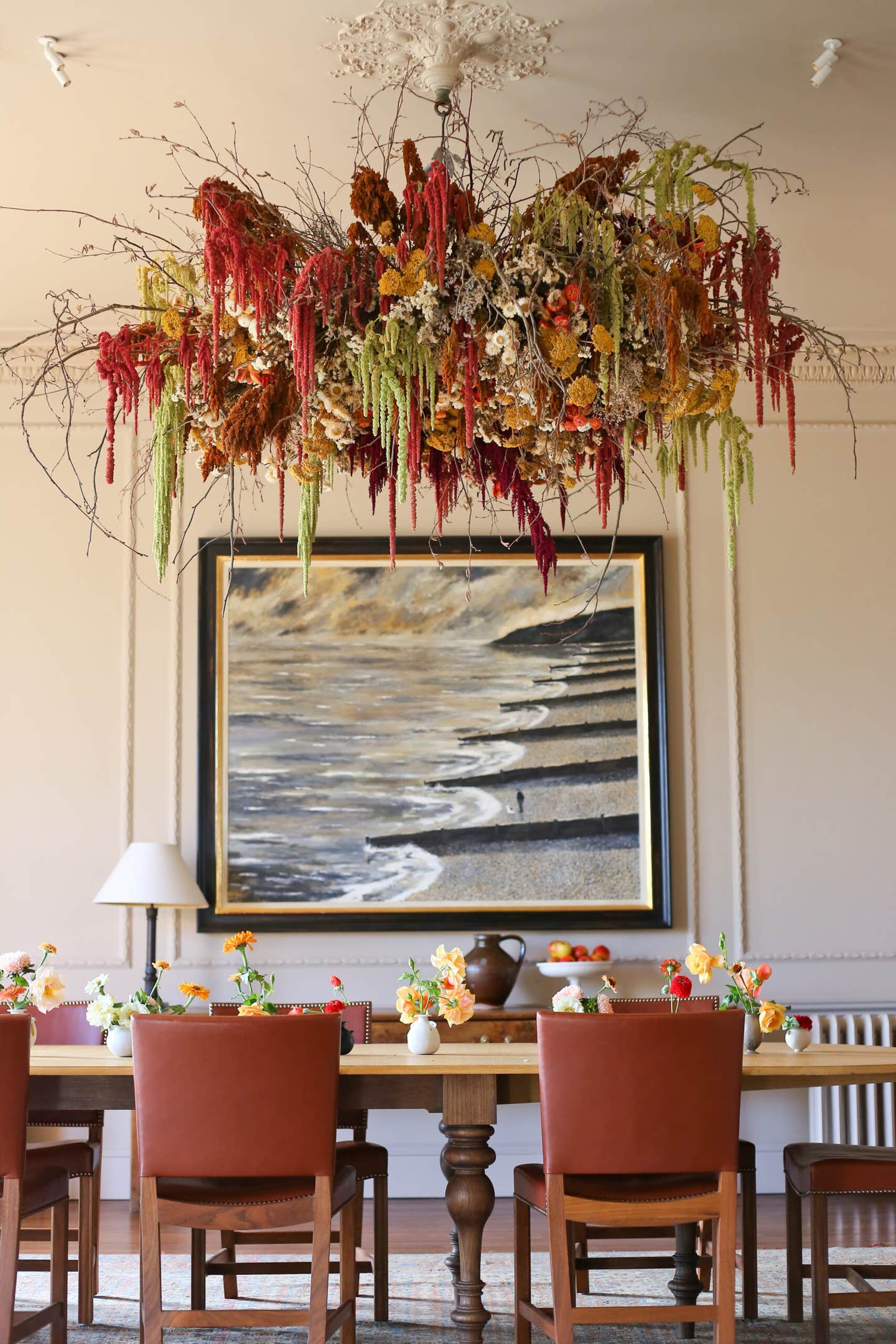
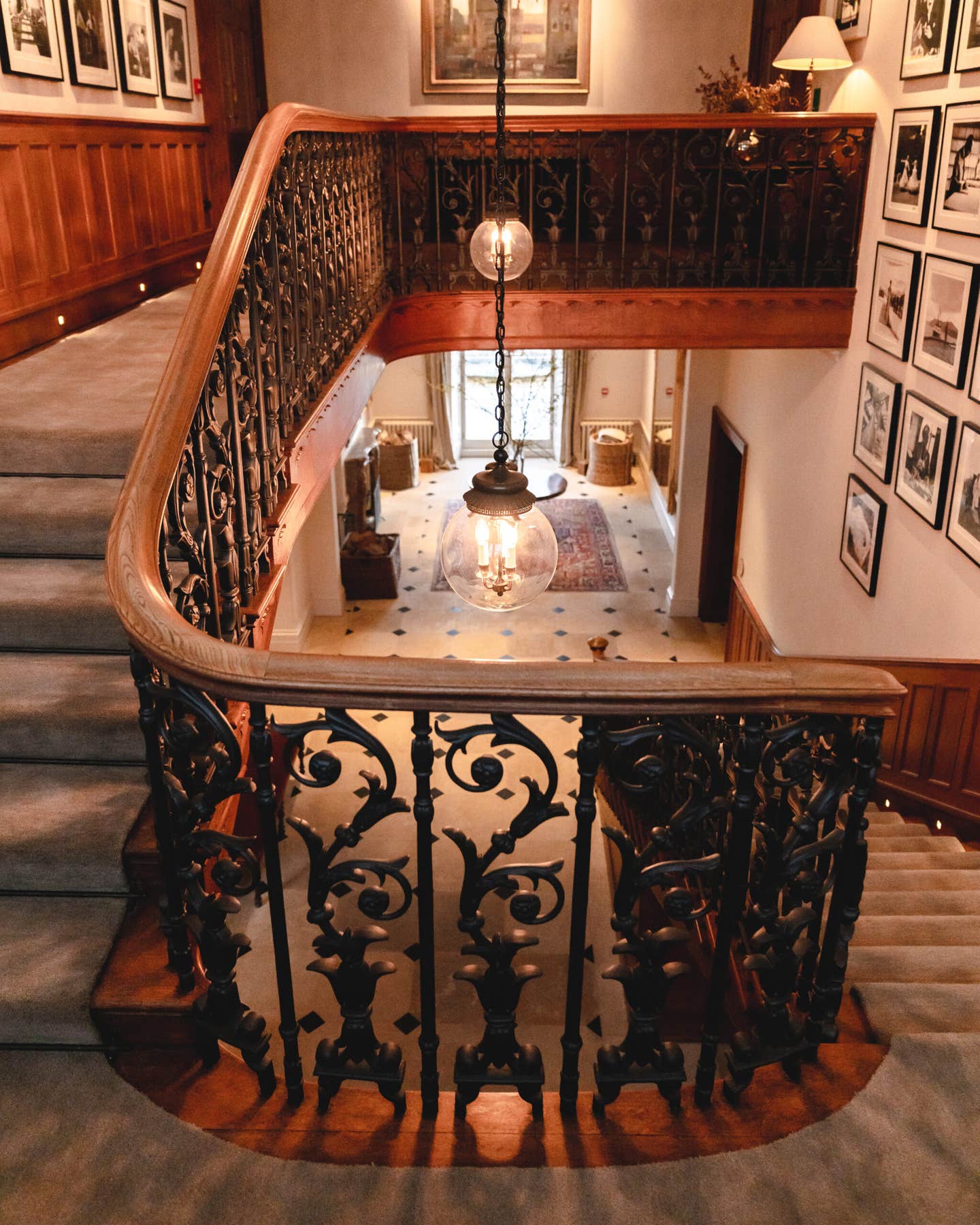
The rooms at Heckfield are beautiful, with views of the woods, more startling bouquets and art, heated marble floors, and thick ceramic tubs. The last day I head to Bothy Spa for a swim before I settle in at the moody Moon Bar for a mouth-puckering Wasabi Sour.
As Page says, “We want people to feel at home here ... We want everyone to feel comfortable in every aspect of the hotel and really welcomed.”
Problem is, I feel so at home that I don’t want to leave. Is there a “Drink Me” potion for that?
